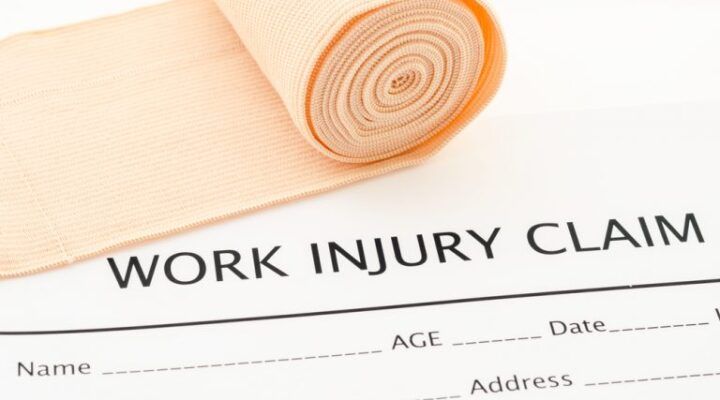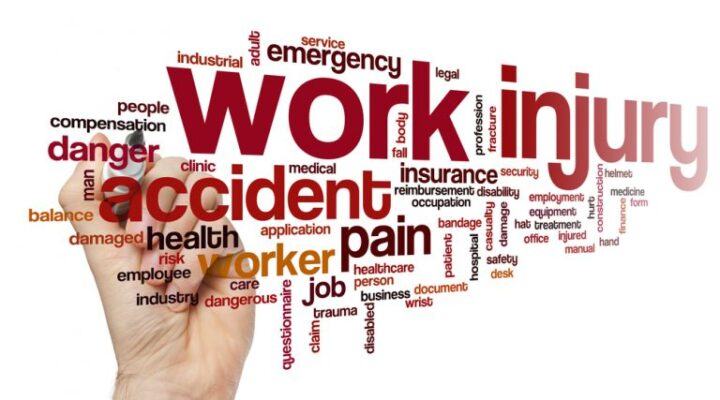Injured Workers need to know that the workers’ compensation system is a risk management system. Therefore, it is important to understand the nature of a risk management system. Insurance Companies and Employers may take actions on your claim and your employment. Therefore, understanding risk management may allow you take measures to protect yourself.
Risk Managers compile information and techniques which allow them to limit costs with respect to workers’ compensation claims.
Injured Workers and Workers should have a general understanding risk management within a work injury context. Risk Managers’ approaches in workers’ compensation claims may unfortunately impact an Injured Worker’s treatment or benefits.
This article will discuss the various factors that Risk Managers consider as important and what areas that they will address as cost-savings measures.
What Is Workers’ Compensation? How Is It Related To Risk Management?
Workers’ Compensation was created to be insurance program that manages work injury losses or costs for employers. The system is designed with the context that businesses and employers can be able to cover the employee injury risk and no go broke. In other words, a work injury claim should be something that can be affordable and not bankrupt a business.
Work Injury losses and costs include indemnity payments, transactional costs such as adjusting and legal costs, and medical treatment costs. Further, employers and insurers are also concerned with respect to reserves. Reserves are monies that are set aside to pay the expected costs on a claim.
What Is Risk Management?
Risk Management is a field which addresses aspects of insurance and loss. Thus, with respect to industrial injuries, Risk Managers focus on both injury reduction and injury prevention.
Part of the injury reduction component includes limiting the nature and extent of injuries as well as the attending costs for the claim. This can include reducing indemnity payments as well as medical treatment.
Part of Risk Management is the ability to predict outcomes. Therefore, knowledge of past claims and past results lays the foundation as to how to approach future claims.
What Are the Methods of Risk Management?
Risk Management methods include safety training, control banding, protective equipment safety guards, safety mechanisms on machinery, and safety barriers. Also, analyzing causes by using root cause analysis may help reduce future injury. Varacallo M, Knoblauch DK. Occupational Injuries and Workers’ Compensation Management Strategies. 2020 Aug 24. In: StatPearls [Internet]. Treasure Island (FL): StatPearls Publishing; 2020 Jan–. PMID: 29262238.
Some aspect of risk management can include workplace inspection.
What Is Risk Management’s View of the Sources of Occupational Injuries?
Risk Managers need to know what can cause injuries in the workplace. Occupational injuries can result from physical, biological, chemical, or psychosocial hazards. Varacallo M, Knoblauch DK. Occupational Injuries and Workers’ Compensation Management Strategies. 2020 Aug 24. In: StatPearls [Internet]. Treasure Island (FL): StatPearls Publishing; 2020 Jan–. PMID: 29262238.
Thus, Risk Managers may have a goal of controlling these hazards. In doing so, this can lead to loss prevention with respect to work injury claims.
Thus, Risk Managers may implement workplace training, rules, and regulations.
What Is Risk Management’s View as to the Types of Work Exposures That Can Cause Injury?
Risk Managers see a variety of exposures that workers encounter in the workplace that are causative towards injuries. Unlike sources of injury, exposures are ones that are in fact injurious in nature. These include “noise, temperature, insect or animal bites, aerosols, blood-borne pathogens, hazardous chemicals, radiation, and occupational burnout.” Varacallo M, Knoblauch DK. Occupational Injuries and Workers’ Compensation Management Strategies. 2020 Aug 24. In: StatPearls [Internet]. Treasure Island (FL): StatPearls Publishing; 2020 Jan–. PMID: 29262238.
Thus, Risk Managers may control the amount of worker’s exposure to these items or events to prevent work injury claims.
What is Risk Management’s View as to Common Sources of Injury?
“Many injuries still occur due to poor ergonomics, manual handling of heavy loads, misuse of equipment, general hazards, and inadequate safety training.” Varacallo M, Knoblauch DK. Occupational Injuries and Workers’ Compensation Management Strategies. 2020 Aug 24. In: StatPearls [Internet]. Treasure Island (FL): StatPearls Publishing; 2020 Jan–. PMID: 29262238.
Thus, Risk Managers, to prevent injury, may implement of ergonomic work stations, training and rules for properly lifting and safety training.
What is Risk Management’s View as to the Common Types of Injuries?
“Slipping or tripping, which causes a fall are common work-related injuries, accounting for 20% to 40% of disabling occupational injuries.” Varacallo M, Knoblauch DK. Occupational Injuries and Workers’ Compensation Management Strategies. 2020 Aug 24. In: StatPearls [Internet]. Treasure Island (FL): StatPearls Publishing; 2020 Jan–. PMID: 29262238.
Further, it should be noted that orthopedic injuries tend to be the most common medical specialty that is employed to treat industrial injuries.
What is Risk Management’s View as to the Parts of the Body Get Injured?
The most common injury is to the Upper Extremities. They represent 50 percent of workplace injuries. Hearing Loss also accounts for a significant amount of occupational injury claims. Further, needle sticks are also a source of injuries as well. Varacallo M, Knoblauch DK. Occupational Injuries and Workers’ Compensation Management Strategies. 2020 Aug 24. In: StatPearls [Internet]. Treasure Island (FL): StatPearls Publishing; 2020 Jan–. PMID: 29262238.
Thus, Risk Managers may impose rest breaks, ergonomics, hearing testing, hearing protections, and proper disposal of needles to prevent work injuries.
What Is Risk Managements’ View of Age?
A Worker’s age can statistically have value to Risk Managers.
Statically, “[a]ge is perhaps the most common personal factor that predisposes a person to an increased risk of work-related injury. Workers aged 65 years and older are more likely to suffer from occupational injuries compared to their younger occupational counterparts.” Varacallo M, Knoblauch DK. Occupational Injuries and Workers’ Compensation Management Strategies. 2020 Aug 24. In: StatPearls [Internet]. Treasure Island (FL): StatPearls Publishing; 2020 Jan–. PMID: 29262238.
Additionally, older workers can make them ”at higher risk for hearing loss, visual impairment, and the use of multiple prescription medications that are linked to higher rates of work-related injuries.”
In sum, Risk Management, although there are laws against age discrimination, may be focused on the tasks that older workers perform.
Does Risk Management Have a Concern with Respect to Occupations?
Yes. Certain occupations for which there are higher rates of work injuries. In particular, the occupations with high rates of include farming, fishing, forestry, construction and manufacturing. Supra.
What is Risk Management’s View with Respect to Testing Proving or Disproving Claims?
Risk Managers rely on traditional work-ups by medical providers to assess work injury claims.
The work-ups include the taking of a comprehensive history and a physical examination. Also, a diagnostic workup should be considered. This diagnostic work-up can include, but is not limited to, radiographs, ultrasound, and advanced imaging modalities.
Risk Managers, however, have concerns with respect to MRIs. It is noted that “while the use of magnetic resonance imaging (MRI) is often helpful in delineating the actual clinical pathology, providers should remain cognizant of the potential for overdiagnosis and the potential for treating a potentially incidental finding that is not the primary source of a patient’s current debilitating condition.” [emphasis added]
Note: This passage shows notes that allowing for medical testing can open a Pandora’s Box of liability. An incidental finding on a MRI can lead to a claim being amended for additional body parts.
Further, it is noted that “MRI has been demonstrated previously in the literature to its known limitations in the appropriate clinical setting. For example, a 2010 study reported on the inconsistent diagnostic accuracy of wrist MRIs being obtained to identify the potential source(s) of ulnar-sided wrist pain.” Supra.
Further, “a 2017 study analyzing work-related injuries consistent with unilateral knee or shoulder injury and subsequent bilateral MRI studies being performed during the diagnostic evaluation reported that less than half of patients had degenerative and/or pathologic findings that would be considered worse than the contralateral, asymptomatic, “normal” side.”
Note: This research is Risk Management propaganda concerning MRIs. The issue is treating symptomatic disabling body parts. The fact that an asymptomatic body part with pathology is present should not create excuse.
What Is Risk Management’s View on Treatment?
Risk Managers view treatment with a two-fold perspective. In the treatment setting, there is the opportunity to treat the injury. Also, there is the opportunity to analyze the work-relatedness of the claim. This can include an assessment as to the value of the claim.
“Each work-related injury is different. Thus, providers should first establish whether the injury is preexisting, directly or indirectly related to the patient’s occupational requirements and if the claim is considered to fall under the workers’ compensation system.” Varacallo M, Knoblauch DK. Occupational Injuries and Workers’ Compensation Management Strategies. 2020 Aug 24. In: StatPearls [Internet]. Treasure Island (FL): StatPearls Publishing; 2020 Jan–. PMID: 29262238.
Risk Managers note that “[t]reatment is specific to the specific condition and may include pain management modalities, physical therapy, NSAIDs, injections, and surgery. It is important to recognize that each patient presenting with occupational-related injuries should be managed on an individual basis as not all conditions are created equal.” This is position is true. This position is not however adhered to during the course of workers’ compensation treatment.
Risk Managers limit claims exposure by asking providers to limit their evaluations and treatment. This can be done by limiting authorization to treat certain body parts or what treatment will be authorized.
What Is Risk Management’s View on Surgery?
Surgeries are not necessarily viewed as beneficial from a Risk Management perspective.
“The literature supports many different types of clinical encounters the potential disparity with respect to postoperative outcomes comparing work-related injury patients compared to their non-work counterparts.”
“For example, total joint replacements are, in general, consistently reproducible procedures that yield excellent outcomes in the vast majority of patients. However, when comparing occupational-based (or workers’ compensation) patients to non-workers’ compensation control patients via matched cohort or comparative studies, the literature demonstrates the potential for a comparably inferior outcome in the former.” Varacallo M, Knoblauch DK. Occupational Injuries and Workers’ Compensation Management Strategies. 2020 Aug 24. In: StatPearls [Internet]. Treasure Island (FL): StatPearls Publishing; 2020 Jan–. PMID: 29262238.
Thus, Risk Managers may have some fear and trepidation as to authorizing surgeries due to the fact that there is the anticipation that the results may not be optimum. As a result, Risk Managers may scrutinize and resist requests for surgery.
What Is the Risk Management’s View of Case Settlement?
Risk Managers have a concern with respect to the future medical costs. This is especially the cases with respect to older workers. It is noted that “the synergistic combination of the older population falling at work, in addition to the older population’s predisposition to these low-energy injuries, sets up the potential for an overall devastatingly morbid effect on the entire healthcare system.” Varacallo M, Knoblauch DK. Occupational Injuries and Workers’ Compensation Management Strategies. 2020 Aug 24. In: StatPearls [Internet]. Treasure Island (FL): StatPearls Publishing; 2020 Jan–. PMID: 29262238. The Risk Management perspective to include nurse practitioners as part of the diagnosis progress.
This perspective indicates that there may be an increased sense of urgency to settle older workers’ case. This is due to the fact of the possible high medical exposure costs. Further, Risk Managers may desire to avoid placing older workers in work setting in which they may be subject to trip and fall injuries.
What Is Risk Management’s View on Obtaining a Medical Diagnosis?
“All healthcare providers are encouraged to manage these patients individually in order to ensure the best possible outcomes.” Varacallo M, Knoblauch DK. Occupational Injuries and Workers’ Compensation Management Strategies. 2020 Aug 24. In: StatPearls [Internet]. Treasure Island (FL): StatPearls Publishing; 2020 Jan–. PMID: 29262238. Nurse practitioners were included as part of the providers who could make the medical diagnosis. Supra.
As a representative of Injured Workers, it is my contention that diagnosis and treatment of Injured Worker should be the purview of medical doctors. They should be the one making the diagnosis and not nurse practitioners. The reliance on nurse practitioners is solely a cost savings measure, Improper or inadequate diagnosis by a nurse practitioner can lead to delay in a achieving a proper medical diagnosis. This improper or inadequate diagnosis can lead to delays in both proper treatment and return to work. Therefore, while reliance on lower level practitioners for diagnosis of a condition may be perceived as cost-cutting, it may not actually be more costly in the long run.
What Is Risk Management’s View Concerning “Return-to-Work?”
Yes. Risk Managers recognize that there are “return to work” issues for Injured Workers. I attended a lecture on this issue. The speaker noted that every day that an Injured Worker missed as a result of their injury impacted on the probability that the worker would return to their usual and customary job.
Thus, Risk Managers acknowledge that an Injured Worker returning to work can have a profound impact on both their workers’ compensation case and the Injured Worker’s employment.
Thus, there may be some instances where Insurance Companies and Employers may encourage early return to the workplace. This can be done via offers of alternative or modified work.
What if I Need Advice?
If you would like a free consultation regarding workers’ compensation, please contact the Law Offices of Edward J. Singer, a Professional Law Corporation. We have been helping people in Central and Southern California deal with their workers’ compensation cases for 27 years. Contact us today for more information.




